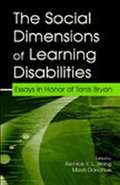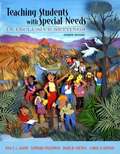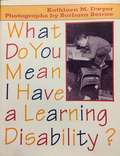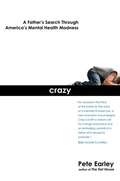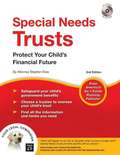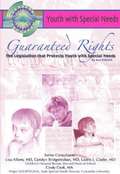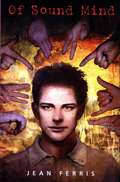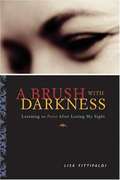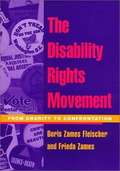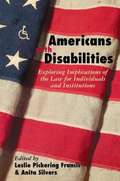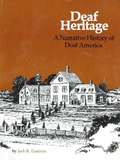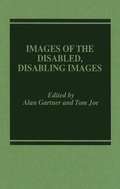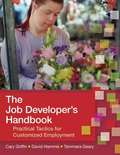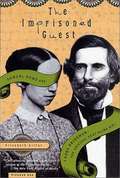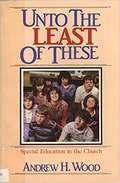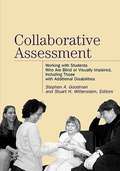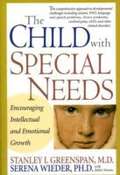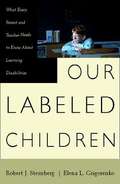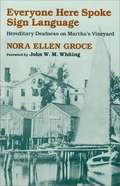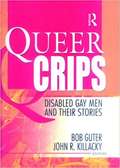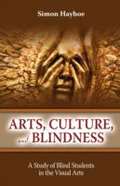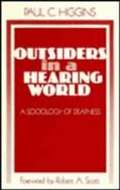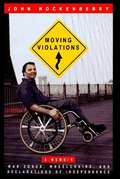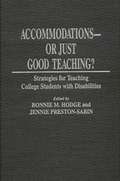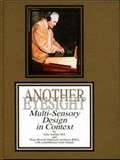Special Collections
Disability Collection
Description: Bookshare is pleased to offer a collection focused on the topic of disability and accessibility. #disability
- Table View
- List View
The Social Dimensions of Learning Disabilities
by Mavis Donahue and Bernice Y. L. WongEssays discussiing the social aspects of Learning Disabilities
Teaching Students with Special Needs
by Tom E. C. Smith and Edward A. Polloway and James R. Patton and Carol A. Dowdythe one thing that will remain constant is the commitment to provide all students, regardless of their abilities or disabilities, with an equal opportunity to receive an appropriate education.
What Do You Mean I Have a Learning Disability?
by Kathleen M. DwyerTen-year-old Jimmy just accepts the fact that other kids can do things better than he can. It's always been that way--but now Jimmy is starting to think there must be a reason. One day he whispers to his cat, "I'm so stupid. I know I am." This true story has a happy ending. One of Jimmy's teachers encouraged his parents to have Jimmy tested, and it turned out that he had a learning disability. Hard work and perseverance, and the support of his family, helped Jimmy overcome his disability. For children who are learning disabled, and for their families and friends, this inspiring book offers encouragement and support in a shared effort.
Crazy
by Pete EarleyFrom the Publisher: Pete Earley had no idea. He'd been a journalist for over thirty years, and the author of several award-winning-even bestselling-nonfiction books about crime and punishment and society. Yet he'd always been on the outside looking in. He had no idea what it was like to be on the inside looking out until his son, Mike, was declared mentally ill, and Earley was thrown headlong into the maze of contradictions, disparities, and catch-22s that is America's mental health system. The more Earley dug, the more he uncovered the bigger picture: Our nation's prisons have become our new mental hospitals. Crazy tells two stories. The first is his son's. The second describes what Earley learned during a yearlong investigation inside the Miami-Dade County jail, where he was given complete, unrestricted access. There, and in the surrounding community, he shadowed inmates and patients; interviewed correctional officers, public defenders, prosecutors, judges, mental-health professionals, and the police; talked with parents, siblings, and spouses; consulted historians, civil rights lawyers, and legislators. The result is both a remarkable piece of investigative journalism, and a wake-up call-a portrait that could serve as a snapshot of any community in America.
Special Needs Trusts
by Stephen EliasIf you care for a child or other loved one with a disability, you've no doubt thought about what will happen when you're no longer able to give that care. Fortunately, there's a simple solution to this dilemma -- create a "special needs trust." Special Needs Trusts shows you how to leave any amount of money to your disabled loved one, without jeopardizing government benefits. It provides plain-English information and forms that let you create a special needs trust by modifying your will or living trust document.
Guaranteed Rights
by Joan EsherickFrom the Book jacket: A local modeling program denies thirteen-year-old Maria the chance to participate in its workshops. The reason? She uses a wheelchair. What should she do? The state of Alabama nearly pulls the plug on a disabled college student's medical support. Why? He was approaching his twenty-first birthday. Are there other avenues this teen can pursue? Employers reject nineteen-year-old Manuel's job application because he has a history of seizures, even though his seizures are completely controlled by medication and his last episode was more than five years ago. Can Manuel appeal? These cases reflect real teens in real circumstances. And all three represent how special needs legislation impacts youth with special needs. Youth with special needs want the chance to reach their potentials, despite the challenges they must overcome. Some face physical or medical challenges. Others have psychological or emotional disorders. Still others live in at-risk circumstances beyond their control. Some may even be in jail. American law affords all these young people certain rights and protections, regardless of their special needs. What are these rights? Where do they come from? Whom do they protect? Guaranteed Rights: The Legislation That Protects Youth with Special Needs will answer these and other questions. It examines the history, passage, and enforcement of special needs law as it relates to appropriate education, appropriate medical care, and equal access to jobs, public places, and services for all youth with special needs.
Of Sound Mind
by Jean FerrisTired of interpreting for his deaf family and resentful of their reliance on him, high school senior Theo finds support and understanding from Ivy, a new student who also has a deaf parent.
A Brush With Darkness
by Lisa FittipaldiWhen Lisa Fittipaldi went blind at the age of forty-seven, she descended into a freefall of anger and denial that lasted for two years. In this moving memoir, she paints a vivid picture of the perceptual and emotional darkness that accompanied her vision loss, and her arduous journey back into the sighted world through mastery of the principles of art and color.
The Disability Rights Movement
by Doris Z. Fleischer and Freida ZamesBased on interviews with almost a hundred activists, this book provides a detailed history of the struggle for disability rights in the United States. It is a complex story of shifts in consciousness and shifts in policy, of changing focuses on particular disabilities such as blindness, deafness, polio, quadriplegia, psychiatric and developmental disabilities, chronic conditions (for example, cancer and heart disease), AIDS, and of activism and policymaking across disabilities.
Referring to the Americans with Disabilities Act as "every American's insurance policy," the authors recount the genesis of this civil rights approach to disability, from the almost forgotten disability activism of the 1930s, to the independent living movement of the 1970s, to the call for disability pride of the 1990s. Like other civil rights struggles, the disability rights movement took place in the streets and in the courts as activists fought for change in the schools, the workplace, and in the legal system. They continue to fight for effective access to the necessities of everyday life-to telephones, buses, planes, public buildings, restaurants, and toilets.
The history of disability rights mirrors the history of the country. Each World War sparked changes in disability policy and changes in medical technology as veterans without limbs and with other disabilities returned home. The empowerment of people with disabilities has become another chapter in the struggles over identity politics that began in the 1960s.
Today, with the expanding ability of people with disabilities to enter the workforce and a growing elderly population, issues like longterm care are becoming increasingly significant at a time when HMOs are trying to contain health care expenditures.
Americans with Disabilities
by Anita Silvers and Leslie Pickering FrancisFew laws have sparked as much debate as the Americans with Disabilities Act (ADA), passed by Congress in 1990. With thought-provoking analysis by noted experts in a variety of fields, this book provides a keen understanding of the consequences of the law--for both those who oppose burdensome costs of the law and those who feel it must do more to protect citizens with disabilities from intolerance and social limitation.
Deaf Heritage
by Jack GannonThis in-depth history of Deaf America begins with an overview of the early years. Each chapter then covers a decade of history, beginning with 1880. The text is supplemented by marvelous pictures, illustrations, vignettes and biographical profiles. "Subchapters" chronicle the multi-facited dimensions of Deaf culture by focusing on Deaf athletes and more. A complete Deaf Culture course!
Images of the Disabled, Disabling Images
by Alan Gartner and Tom JoeIn this collection of a dozen essays, writers with strong backgrounds in the disability rights movement examine the roots of public attitudes toward the disabled. Several essays consider portrayals of people with disabilities in literature, film, and journalism. Others explore social policy toward the disabled in education, employment, and health-care. Nat Hentoff's powerful piece, ""The Awful Privacy of Baby Doe," expresses the author's outrage over the case of a child born with spina bifida who was denied treatment because doctors persuaded her parents that she would be better off dead.
The Job Developer's Handbook
by Cary Griffin and David Hammis and Tammara GearyOne of the most practical employment books available, this forward-thinking guide walks employment specialists step by step through customized job development for people with disabilities, revealing the best ways to build a satisfying, meaningful job around a person's preferences, skills, and goals. Internationally known for their innovative, proactive job development strategies, the authors motivate readers to expand the way they think about employment opportunities and develop creative solutions.
Readers will get fresh, proven tips and ideas for every aspect of job development for youth and adults with significant support needs:
To make each part of job development easier, the book arms readers with practical content they can really use: easy-to-follow, step-by-step guidelines; checklists of critical questions to answer; success stories in both urban and rural settings; and sample scenarios, dialogues, and interview questions.
Equally useful to veteran professionals and those just starting out, this compelling guidebook breathes new life into the job development process and helps readers imagine a wider world of employment opportunities for people with disabilities.
The Imprisoned Guest
by Elisabeth GitterDid you ever wonder what inspired Helen Keller's mother to have such high hopes for her daughter? The answer is Laura Bridgman, the original deaf-blind girl who inspired Charles Darwin to visit her and also write about her in American Notes.
Unto the Least of These
by Laverne Webber and Ellen Glanville and Andrew WoodDescribes how to develop a ministry for the mentally retarded. Includes teaching strategies, discipline information, and other useful information.
Collaborative Assessment
by Stephen A. Goodman and Stuart H. WittensteinThis comprehensive text published by AFB in 2003 is the first to present assessment in a way that can be understood by professionals and families alike.
The Child With Special Needs
by Stanley I. Greenspan and Serena WiederThis book describes various challenges that some children with special needs might face. The author goes into great detail about the floor time treatment method as well as describing the impact having a child with special needs has on the family.
Our Labeled Children
by Robert J. Sternberg and Elena L. GrigorenkoSternberg and Grigorenko, both psychologists and researchers at Yale University, are concerned that the way learning disabilities are assessed and treated in American school systems is not consistent. They argue that everyone is learning disabled in something, but that society only chooses to recognize disabilities in certain areas. They also note that lumping all children labeled learning disabled into this one category actually harms most of the children because they do not all have the same needs. The authors suggest that instead of this one form of remediation, the schools should develop a system through which the needs of each child are met on an individualized basis.
Everyone Here Spoke Sign Language
by Nora E. GroceFrom the seventeenth century to the early years of the twentieth, the population of Martha's Vineyard manifested an extremely high rate of profound hereditary deafness.
In stark contrast to the experience of most deaf people in our own society, the Vineyarders who were born deaf were so thoroughly integrated into the daily life of the community that they were not seen-- and did not see themselves-- as handicapped or as a group apart. Deaf people were included in all aspects of life, such as town politics, jobs, church affairs, and social life.
How was this possible? On the Vineyard, hearing and deaf islanders alike grew up speaking sign language. This unique sociolinguistic adaptation meant that the usual barriers to communication between the hearing and the deaf, which so isolate many deaf people today, did not exist.
Queer Crips
by John R. Killacky and Bob Guterthis is an anthology of essays and short stories about gay men who are also disabled. Many of the stories and essays are taken from Bent, an on-line publication that gives voice to the often silent voices of disabled gay men.
Arts, Culture, and Blindness
by Simon HayhoeThis book explores one of the most powerful myths in modern society: the myth that blind people are incapable of understanding and creating visual arts.
Outsiders in a Hearing World
by Paul C. HigginsSociological observations on several topics in the deaf community: identity, deviance among the deaf, stigma, and encounters with the hearing.
Moving Violations
by John HockenberryParaplegic newscaster Hockenberry speaks as a thought-provoking journalist, an insightful iconoclast and a man defined, but never confined by a wheelchair.
Accommodations--or Just Good Teaching?
by Bonnie M. Hodge and Jennie Preston-SabinThis is an excellent book for college professors, college students with disabilities, or people working with disabled college students. it explains the different accommendations available for these students, and what exactly the law covers. Definitely worth reading if you are a student planning to go to college and who have a disability.
Another Eyesight
by Julia Ionides and Peter HowellThis book provides an overview and some in-depth information about the many ways of creating multi-sensory access for blind and partially sighted people to art, nature and historical sites.
